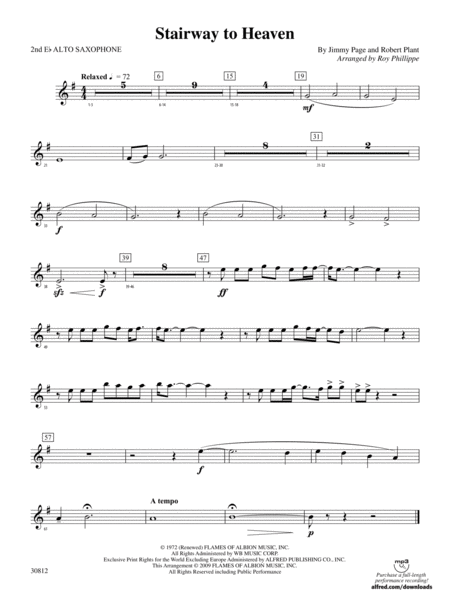Concert Band - Digital Download SKU: AX.00-PC-0001687_AX2 2nd E-flat Alto Saxophone. By Jimmy Page, Led Zeppelin, and Robert Plant. Arranged by Roy Phillippe. Instructional. Part. 1 pages. Alfred Music - Digital Sheet Music #00-PC-0001687_AX2. Published by Alfred Music - Digital Sheet Music (AX.00-PC-0001687_AX2). UPC: 038081348940.Stairway to Heaven is a song by the English rock band Led Zeppelin. It was composed by guitarist Jimmy Page and vocalist Robert Plant for the band's fourth studio album, Led Zeppelin IV. It was voted #3 in 2000 by VH1 on their list of the 100 Greatest Rock Songs. It is the most requested and most played song on FM radio stations in the United States, despite never having been released as a single there. Classic rock just never goes bad! This solidly scored arrangement has a driving rock beat that will have your concert band at the top of the charts as well.
